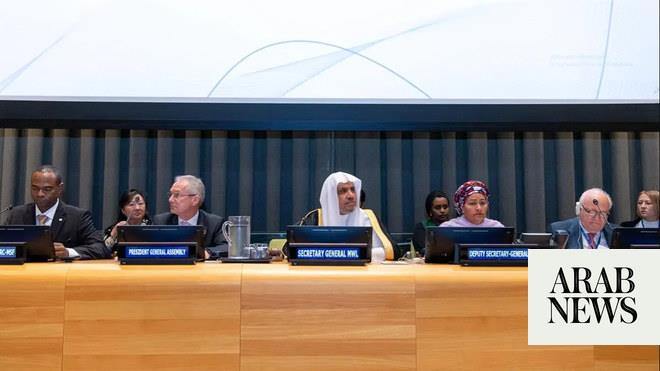
Russia and Saudi Arabia have developed a strong economic partnership in recent years. However, our partnership is not just economic. We are seeing a growing exchange in other areas as well, such as culture. It started with the Saudi Cultural Week in Moscow last year during King Salman’s visit.
Arts and culture were historically in the shadow of the bricks-and-mortar economy, but this attitude is changing fast as this sector is seen as a source for new jobs and sustained economic growth while private companies realize that this trend is an opportunity.
In many countries, arts and culture already play an important economic role. According to UNESCO data, this sector provides jobs for 30 million people worldwide.
The expected rise in productivity across many sectors, prompted by new technologies such as artificial intelligence, may herald a new golden era for the “creative” sector. More free time, due to automation, will generate strong demand for arts and entertainment, and create new jobs.
While state budgets will remain the main source of funding for arts and culture in the foreseeable future, there is scope for more cultural initiatives by corporations and high net worth individuals.
Saudi Arabia is one of the countries that identified this trend early. Cultural development is an important part of the Vision 2030 program led by Crown Prince Mohammed bin Salman.
The program aims to double the population’s spending on culture and entertainment while developing local arts, cinema and historical heritage. It considers culture indispensable to the Saudi people’s quality of life, and aims to bring the treasures of world arts and culture to the Kingdom.
Saudi Arabia is potentially one of the largest international markets for Russian arts, with more demand coming in the near future from new megaprojects laid out in Vision 2030.
Kirill Dmitriev
Russia has been a recognized global cultural leader for the last two centuries. The names of writers such as Leo Tolstoy and Fyodor Dostoyevsky, composer Pyotr Tchaikovsky, artist Wassily Kandinsky and film director Sergei Eisenstein are acclaimed worldwide.
Tireless promotion and organizational work of famous Russian cultural entrepreneur Sergei Diaghilev made Russian art fashionable throughout Europe at the start of the 20th century.
Today Russia is witnessing a similar renaissance in arts and culture, with many successful new projects, such as the Garage Museum of Contemporary Art, emerging alongside thriving world-famous museums the Hermitage, the Tretyakov Gallery and the State Russian Museum.
The Russian Direct Investment Fund (RDIF) believes that culture not only supports economic growth, but also builds bridges between nations, creating an atmosphere of mutual trust.
This is why last summer we helped to bring the Mariinsky Theatre Orchestra, conducted by world-renowned maestro Valery Gergiev, to Saudi Arabia. It was the first world-class symphonic concert in the Kingdom’s history.
The event was the first example of cultural cooperation between RDIF and Saudi Aramco. It took place in the King Abdulaziz Center for World Culture in the country’s oil capital, Dhahran.
The concert was attended by Saudi and Russian government and business delegations, as well as many ordinary Saudis who appreciate world-class culture. The concert received an enthusiastic standing ovation from the audience.
Now, only a few months later, RDIF, the State Russian Museum — which has the largest collection of Russian art in the world — and the PIF will show five paintings by Russia’s most internationally recognized 20th century avant-garde artists, Kandinsky and Pavel Filonov, on the sidelines of the Future Investment Initiative (FII) conference in Riyadh.
This event is the first Russian art exhibition in the Kingdom of Saudi Arabia and a precursor for the large “Kandinsky and Russia” exhibition planned for early next year. The exhibition at the FII will be our first joint cultural endeavor with the PIF.
Russia is also open to Saudi art. Last year’s Saudi Cultural Week was well received by the audience in Moscow and there is strong interest in Saudi culture throughout Russia.
Saudi Arabia is potentially one of the largest international markets for Russian arts, with more demand coming in the near future from new megaprojects laid out in Vision 2030.
Russia will always be highly competitive in the “creative” sector on a global scale. Russian artists and cultural entrepreneurs should seize on opportunities opening up in the Saudi market and be ready to offer the most ambitious projects. This cultural cooperation will contribute to long-term relationship between our countries.
Kirill Dmitriev is CEO of the Russian Direct Investment Fund, the sovereign wealth fund of theRussian Federation. He is speaking in the opening session of FII “One world: Can global investment inspire collective vision of the future?”
Disclaimer: Views expressed by writers in this section are their own and do not necessarily reflect Arab News" point-of-view












